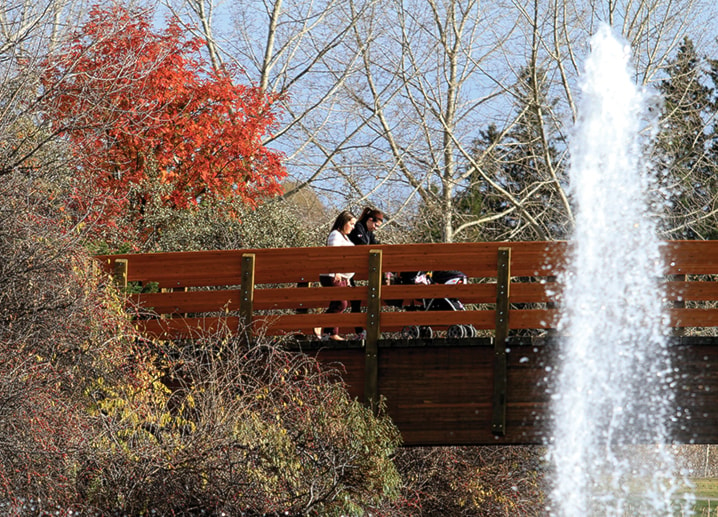Call this week’s hot October weather what you like, but don’t call it climate change.
Across Alberta, the extended data base shows nine records were broken and eight others were within two degrees of breaking a record on Monday, said Bill McMurtry, Environment Canada meteorologist.
The warm fall weather is quite a common occurrence for Western Canada, he said.
Red Deer, which saw Monday as warm as many days this summer, reached a high of 22.4C. The record was 24.4 in 1940. Red Deer records go back to 1904.
At this time of year, Red Deer normal average daytime highs are 9C and lows are -3C.
Sundre did set a record of 22.9C, breaking the 1992 record for Oct. 20 of 20.5C. Lacombe was warmer than many other places on Monday at 23.3C but was still a long way off from its record of 28.3C set in 1940.
Another community close to a record was Rocky Mountain House, which saw the mercury top out at 21.6C. The record was 22.2C in 1952. Coronation broke its 1974 record of 23.3C record, hitting 24.2C.
The records are based on Environment Canada’s extended data base. While some communities may show a record, in many cases the data base is shorter and may only go back about 10 years, said McMurtry.
“The issue is on the official Environment Canada website they have climate records for numerous locations across the province. However that does not include the extended data.
“Whenever a weather station was set up in a location, whatever the last weather station was set up there, they’ll use that as the data base for that location, which may only be 10 years of records.
“So there’s 10 years of records there and then they say well there’s a record in community X because it’s the warmest temperature that’s been measured since that new weather station’s been placed there.”
“So it’s quite confusing. We’ve been trying to work on it.” This involves eventually merging data bases and establishing criteria regarding the location of a weather station. For example, as it stands now, even if a new station is within just metres on an old one, the data base only goes back to when the new station was established.
When temperatures include those stations with a shorter data base, there were about 30 records set on Monday in Alberta.
But without these, there were still a lot of records set (nine), McMurtry said.
The warm weather is coming from a big upper ridge of high pressure situated over Western Canada. An air mass that would typically be over Nevada and Arizona was pushed northward.
“When you get those big deviations of warm air masses from the south moving northward, that’s when you get these very warm temperatures across a large area of Western Canada,” said McMurtry.
“Contrary to that type of scenario is when you get an upper trough coming down where you get cold air displaced from the Arctic southward into the Prairies ... it’s equally opportunistic this time of year to see that as well.”
“Unfortunately all good things come to an end eventually and we see today (Tuesday) temperatures won’t be as warm as what we saw yesterday. But we’re still above average.”
“When we get those big areas of high pressure move in we get records set over an extended area. ...Typically we see that in either late September or sometime in the month October, and sometimes we see it as late as early November.”
Red Deer will still see above normal temperatures for the next three days but Friday and the weekend it will cool off to more seasonal values, and by the start of the new work week temperatures will be a couple degrees below normal, McMurtry said.
barr@www.reddeeradvocate.com
